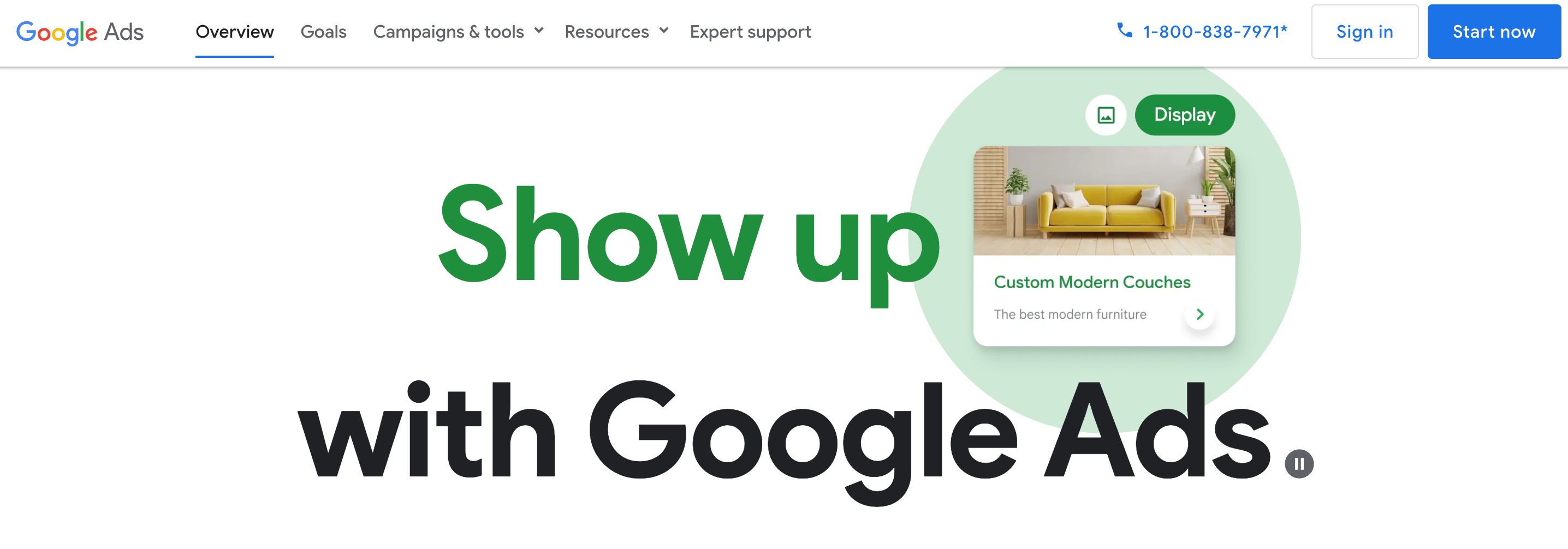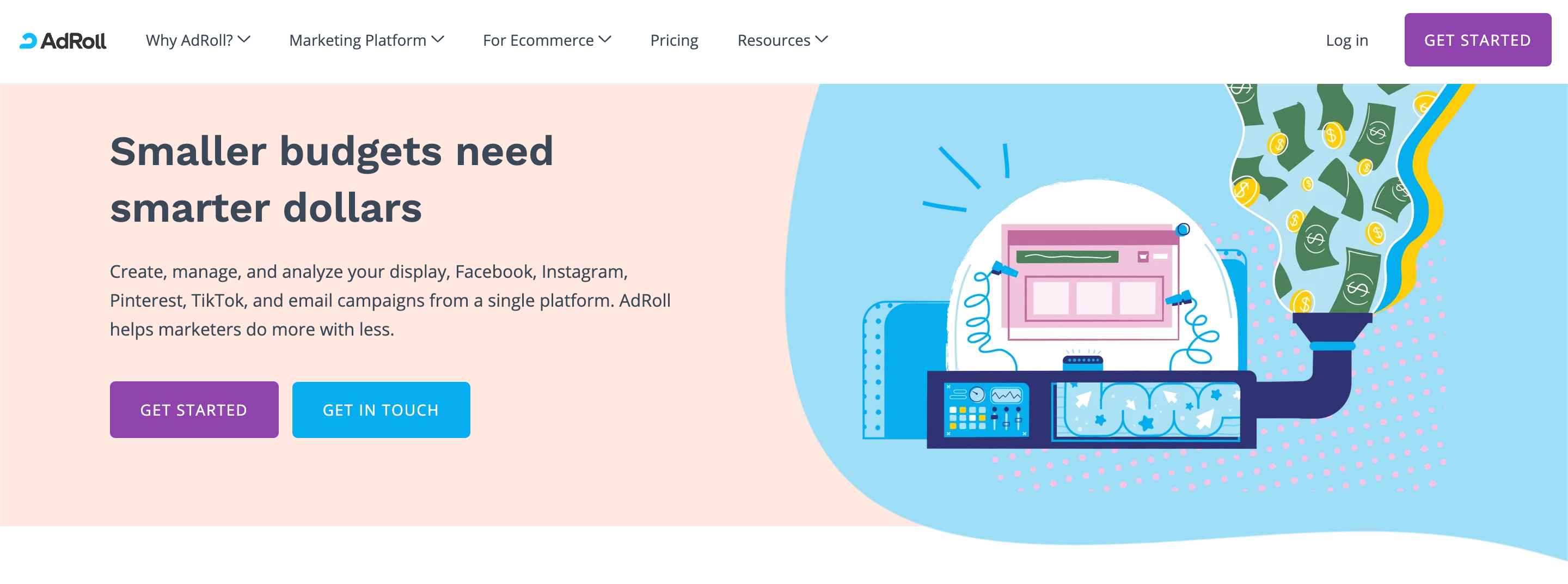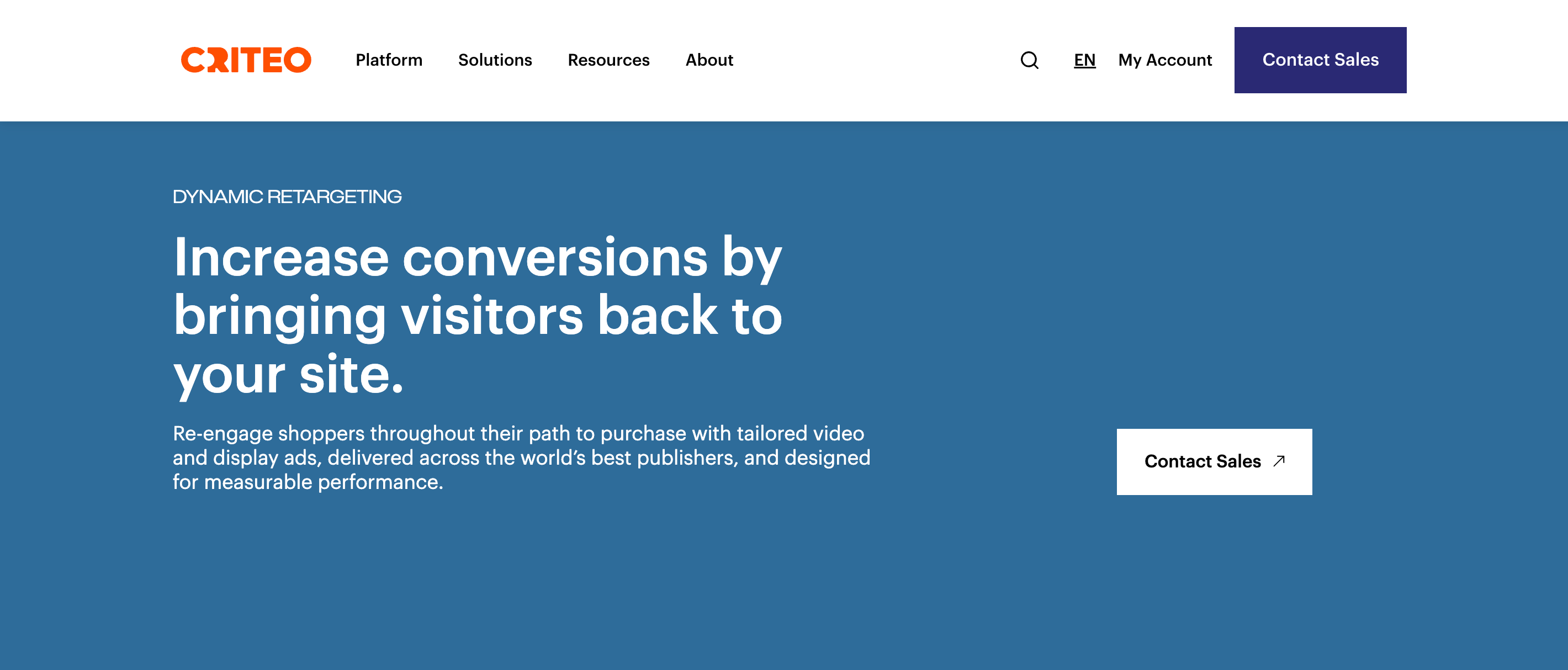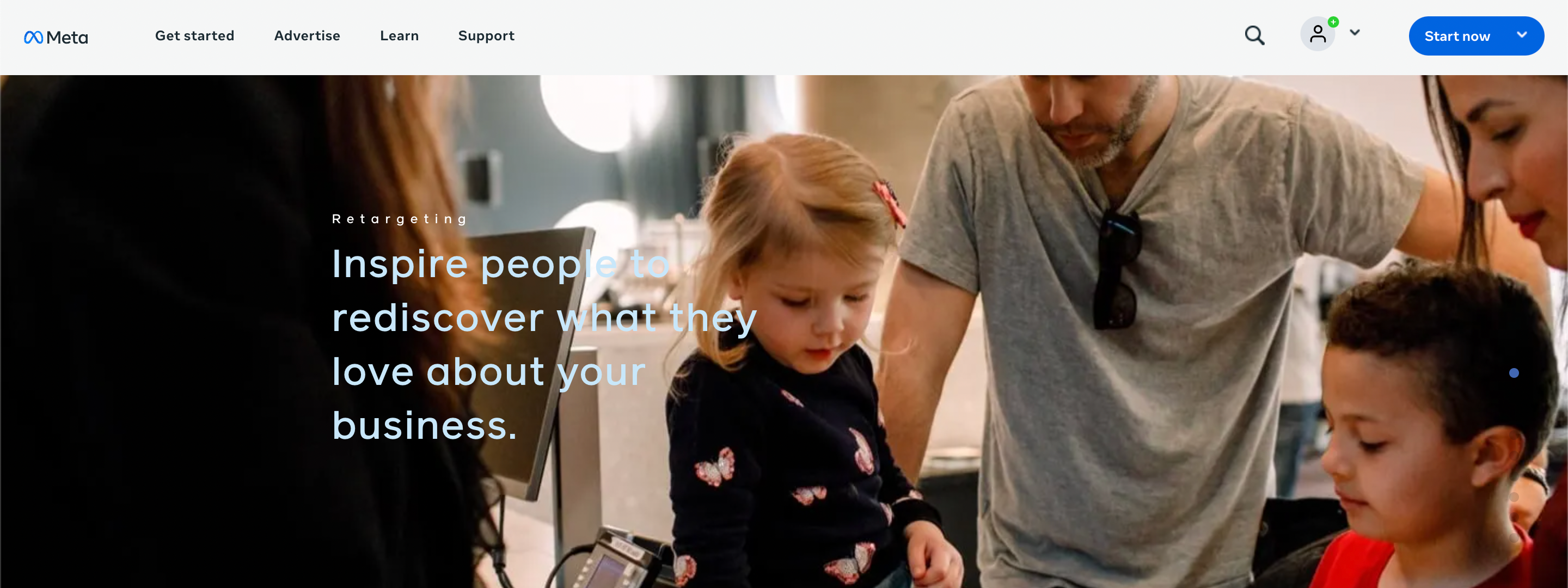- What is a Remarketing Agency?
- How Do Remarketing Ads Work?
- Benefits of Remarketing Campaigns
- Best Tools for a Remarketing Campaign
- Conclusion
Remarketing services refer to the practice of targeting individuals who have previously interacted with your brand or website and re-engaging them with tailored advertisements.
It is a digital marketing strategy that allows businesses to reconnect with potential customers who have shown interest in their products or services but haven’t made a purchase or converted.
What is a Remarketing Agency?
A remarketing agency is a specialized marketing agency that focuses on helping businesses implement and manage remarketing campaigns.
These agencies have expertise in leveraging various remarketing techniques and platforms to target and re-engage with specific audiences who have interacted with the business or shown interest in its products or services.
The primary role of a remarketing agency is to develop and execute remarketing strategies tailored to the client’s goals and target audience. This involves setting up remarketing campaigns, defining audience segments, creating compelling ad creatives, monitoring performance, and optimizing campaigns to achieve desired results.
These companies provide remarketing solutions with the help of these steps
1. Define remarketing objectives
They collaborate with the client to understand their marketing goals, target audience, and desired outcomes for the remarketing campaign.
2. Set up remarketing campaigns
The agency handles the technical setup and configuration of remarketing platforms such as Google Ads, Facebook Ads, or other ad networks. This involves implementing tracking codes, audience creation, and campaign structuring.
3. Audience segmentation
Remarketing agencies help businesses identify and segment their audiences based on specific criteria. Such as website interactions, abandoned shopping carts, or previous purchases. This allows for more targeted and personalized remarketing campaigns.
4. Ad creative development
They create visually appealing and compelling ad creatives that align with the client’s brand and campaign objectives. This includes designing display ads, text ads, video ads, or other ad formats suitable for the remarketing platforms you use.
5. Campaign optimization
Remarketing agencies continuously monitor campaign performance, analyze data, and make data-driven optimizations to improve results. They may adjust bidding strategies, refine audience targeting, or modify ad creatives based on insights gained from the campaign analytics.
6. Reporting and analysis
Agencies provide regular reports and insights on campaign performance, including metrics such as impressions, clicks, conversions, and return on ad spend (ROAS). This helps clients assess the effectiveness of their remarketing efforts and make informed decisions for future campaigns.
How Do Remarketing Ads Work?
- Tracking: A tracking code or pixel is placed on your website, which collects data about user behavior, such as pages visited, products viewed, or actions taken.
- Audience creation: Based on the collected data, specific audience segments are created. These segments may include people who visited certain pages, abandoned shopping carts, or spent a certain amount of time on the website.
- Ad creation: Customized advertisements are created to target these specific audience segments. The ads can be displayed on various platforms, including search engines, social media networks, or display ad networks.
- Ad targeting: The remarketing platform uses cookies or other identifiers to recognize the users within the targeted audience segments as they browse the internet.
- Ad display: When a user within the target audience visits other websites or social media platforms that are part of the ad network, they are shown relevant ads related to the products or services they previously showed interest in.
- Ad customization: Remarketing ads often include personalized content or offers to entice the users to return and complete their desired actions, such as making a purchase or submitting a form.
What Are the Benefits of Remarketing Campaigns?
- Increased conversions: By targeting users who have already expressed interest in your brand, remarketing increases the likelihood of conversions and sales.
- Enhanced brand recall: By consistently displaying ads to past visitors, remarketing helps reinforce your brand in their minds, increasing the chances they will remember you when making a purchasing decision.
- Personalization: Remarketing allows for highly targeted and personalized ad content, which can improve engagement and relevance for users.
- Improved ROI: Since remarketing targets users who are already familiar with your brand. It often delivers higher conversion rates and a better return on investment compared to traditional advertising methods.
The Best Tools for Your Remarketing Campaign
1. Google Ads

When it comes to retargeting, it’s crucial to explore what Google has to offer. With the extensive Google display network spanning over a million websites, videos, and apps, Google Ads provides abundant opportunities for successful retargeting campaigns.
Setting up Google remarketing services is a seamless process that can be done directly from your Google Ads account. Simply add the remarketing tag to your website, create your ads, set up your campaign, and you’re ready to roll.
To get started, navigate to the shared library within your Ads account, accessible from the campaigns tab. From there, you can easily create a list of individuals who have visited specific sections or pages of your website. This allows for precise audience targeting and customized ad delivery.
2. AdRoll

AdRoll, a prominent player in the online advertising industry for years now. It has established itself as a go-to choice for businesses, primarily due to its exceptional retargeting plans.
Collaborating with major advertising partners like Facebook Exchange, Google, Yahoo, and Microsoft, AdRoll enables businesses to reach an extensive network of websites. This wide reach ensures maximum exposure for your brand and increased opportunities for customer engagement.
AdRoll excels in employing advanced targeting techniques, including customer segmentation, geo-targeting, and more.
Their platform empowers businesses to target or exclude site visitors based on specific actions. You can create user groups according to purchase intent, and establish sophisticated conversion tracking rules. Such capabilities allow for highly customized and precise ad targeting.
Simplicity is a hallmark of AdRoll’s retargeting approach, as evidenced by features like user-friendly analytics that provide easily digestible insights. Additionally, as an official partner of Facebook, AdRoll offers one of the best and most user-friendly platforms for retargeting customers on the popular social media platform, particularly through news feed ads.
To sum it up, AdRoll stands out as the leading contender among retargeting platforms. While it may come with a slightly higher price tag, the value it delivers through its service and user-friendly platform make it a worthwhile investment for your marketing budget.
3. Criteo

Criteo offers a comprehensive cross-device advertising solution that allows you to connect with your customers, regardless of the device they are using. This includes desktop and mobile sites, as well as social media platforms.
With Criteo’s cross-device capabilities, you can ensure a seamless and consistent user experience across various touchpoints.
When it comes to web retargeting services, Criteo maintains a direct relationship with publishers and employs a CPM pricing model for inventory purchases.
In addition to their retargeting services, Criteo offers features such as Dynamic Creative Optimization+. This innovative solution generates real-time ads personalized for every individual. They also focus on video remarketing and advertising.
4. Facebook

With Facebook boasting a user base of close to 3 billion active people, the advertising opportunities are virtually limitless.
If you’re already running Facebook Ads but are seeking additional conversions, it’s worth considering the setup of Custom Audiences on the platform.
By creating a Facebook pixel and embedding it on your website, you can build a custom audience that specifically targets individuals who have interacted with your website.
Custom Audiences offer flexibility as well. You can create a distinct list for audiences who have visited a specific page on your website or opt for a broader category like “website visitors.” Once the pixel identifies 20 or more customers, your list will be ready for utilization.
In addition to targeting website visitors, Facebook Ads allows you to create custom audiences based on your email subscription list and mobile app users. This enables you to reach out to a wider range of potential customers across various channels.
Furthermore, Facebook Ads provides the option to create remarketing lists for Lookalike audiences. This feature assists brands in connecting with new customers who share similarities with your existing audience. By compiling a list of visitors, you can create an ad and apply it to your custom audience, effectively re-engaging and expanding your customer base.
In summary, Facebook Ads offers a multitude of tools and features to maximize your advertising efforts. With Custom Audiences and Lookalike audiences, you can precisely target specific groups and tap into new customer pools.
By leveraging these capabilities, you can optimize your Facebook advertising strategy and drive conversions with greater efficiency.
Conclusion
In today’s competitive digital landscape, remarketing services have emerged as a powerful tool f businesses. They can re-engage with their target audience, drive conversions, and maximize their marketing efforts.
Through strategic audience segmentation, tailored ad content, and precise targeting across multiple advertising channels, businesses can deliver relevant messages that resonate with their audience’s interests and preferences. This not only increases the likelihood of conversions but also strengthens brand recall and customer loyalty.
Remarketing services offer a range of benefits, including increased conversion rates, improved return on investment (ROI), and enhanced user engagement.
By reconnecting with users who have already engaged with their brand, businesses can optimize their marketing spend. They can start focusing on users who have demonstrated a higher intent to purchase.
Furthermore, remarketing services are continuously evolving, introducing advanced features such as dynamic remarketing, cross-device targeting, and data-driven insights.
As with any marketing strategy, it’s crucial to prioritize user privacy and comply with relevant regulations and guidelines. Providing transparent opt-out options and respecting user preferences not only builds trust but also ensures a positive user experience.
In conclusion, remarketing services have revolutionized the way businesses connect with their audience and drive conversions.
By leveraging user data, implementing personalized ads, and optimizing campaigns, businesses can create meaningful connections. Moreover, they can maximize their marketing efforts, and ultimately achieve their goals in today’s dynamic digital landscape. Embracing remarketing services as a core component of a comprehensive marketing strategy can unlock new opportunities and help businesses thrive in a competitive online market.
FAQ
Remarketing works by placing a tracking code or pixel on your website to collect data about user behavior. Based on this data, specific audience segments are created. Customized ads are then created and displayed to these targeted audience segments as they browse other websites or platforms within the advertising network.
Remarketing can be implemented on various platforms, including search engines (like Google Ads), social media networks (such as Facebook Ads), display ad networks, and email marketing platforms.
Remarketing should be implemented with respect for user privacy. Advertisers should comply with relevant privacy regulations and provide clear opt-out options for users who do not wish to be remarketed to. Transparency and respecting user preferences are key to maintaining a positive user experience.
To measure the success of your remarketing campaigns, you can track metrics such as click-through rates, conversion rates, cost per acquisition, and return on ad spend. Most remarketing platforms provide analytics and reporting tools to help you evaluate the performance of your campaigns and make data-driven optimizations.



